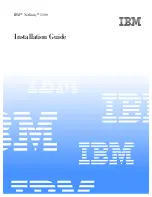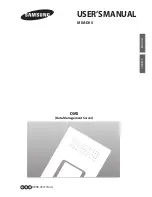
H2
164004.C03
H.1.3 Failure Effect Assumptions
The assumption is made that each and every component failure mode will result in the
failure of the TP400. This is clearly a conservative assumption. Many component
failure modes, for example a 25% drift in the value of a pull-up resistor, are unlikely to
have any effect on the operation of the device.
H.2
RELIABILITY DATA USEAGE
H.2.1 Operating
Temperature
This is the operating ambient temperature for the TP400, in degrees Celsius. This
should be the in-use steady state temperature as measured by the on-board
temperature sensor. Since the sensor is located under the Geode GX1, the hottest
component on the assembly, using this temperature against Table H1 and Figures H1
and H2 will provide a conservative estimate of the reliability of the TP400.
On examining the reliability derating curves produced for this Appendix, it is clear that
thermal management is important in the application of the TP400. Where reliance is
placed on a cooling component/system for the thermal management of the TP400, the
cooling component/system reliability will need to be assured.
Note that the Tables and Figures range from 25ºC to 75ºC.
H.2.2 Flash Memory Usage
It should be noted that the Flash memory in the TP400 is expected to withstand
1,000,000 write/erase cycles per sector. If very frequent file management and update
tasks, using the Flash memory for storage, are implemented within the application, an
estimate of the write/erase cycle frequency on the reliability of the TP400 will have to
be calculated over the expected life of the unit. For example, if each sector of the flash
memory were written/erased every 5 minutes, the device life would expire after 9.5
years.
If the Flash memory is used purely for BIOS storage, this limitation has no effect. Read
cycles have no effect on the longevity of the Flash Memory.
H.2.3 Usage
Environment
This is the operating environment of the TP400. The following list gives the
environment code and description for the various Bellcore environments:
Benign (fixed and controlled): Nearly zero environmental stress with the optimum
engineering operation and maintenance. Typical applications are environmentally
controlled control rooms and environmentally controlled customer premises. Not
analogous to any marine environment. It should be noted that this usage environment
is only achievable by very careful thermal management of a small, thermally active unit
like the TP400.
Fixed (fixed and uncontrolled): Some environmental stress with limited maintenance.
Typical applications are manholes, poles, remote terminals, and customer premise
Summary of Contents for 104-plus
Page 2: ... This page is intentionally left blank ...
Page 4: ... This page is intentionally left blank ...
Page 76: ...66 158004 B00 This page is intentionally left blank ...
Page 86: ...B8 158004 B00 This page is intentionally left blank ...
Page 88: ...C2 158004 B00 FIGURE C1 MAIN BOARD TOP COMPONENT PLACEMENT ...
Page 89: ...158004 B00 C3 FIGURE C2 MAIN BOARD BOTTOM COMPONENT PLACEMENT ...
Page 90: ...C4 158004 B00 FIGURE C3 DAUGHTER BOARD TOP COMPONENT PLACEMENT ...
Page 91: ...158004 B00 C5 FIGURE C4 DAUGHTER BOARD BOTTOM COMPONENT PLACEMENT ...
Page 92: ...C6 158004 B00 FIGURE C5 MAIN BOARD MECHANICAL DIMENSIONS ...
Page 93: ...158004 B00 C7 FIGURE C6 DAUGHTER BOARD MECHANICAL DIMENSIONS ...
Page 94: ...C8 158004 B00 This page is intentionally left blank ...
Page 100: ...D6 158004 B00 This page is intentionally left blank ...
Page 116: ...E16 158004 B00 This page is intentionally left blank ...
Page 134: ...H6 164004 C03 This page is Intentionally left blank ...
Page 136: ...J2 164004 C03 FIGURE J1 TP400ET MECHANICAL DRAWINGS FIGURE J2 TP400ET CIRCUIT DIAGRAM ...
Page 138: ...K2 158004 B00 FIGURE K1 TP300USB MECHANICAL DRAWINGS FIGURE K2 TP300USB CIRCUIT DIAGRAM ...











































